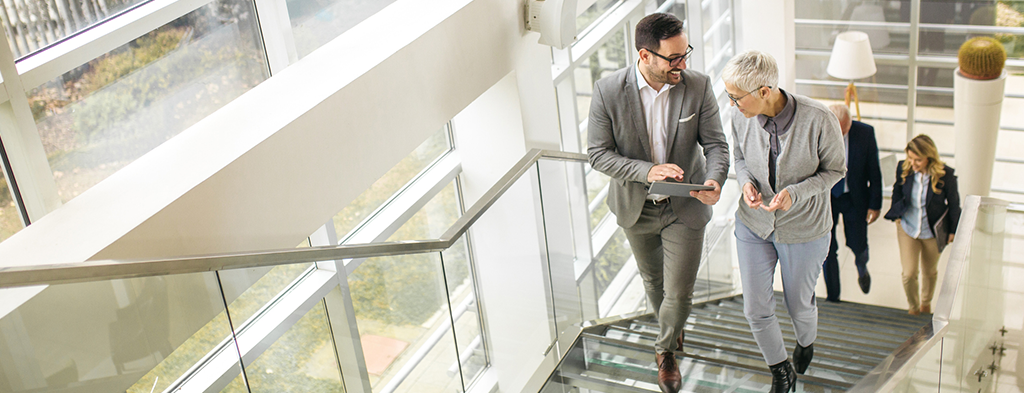Since our founding 25 years ago, BrandActive’s partners have demonstrated an authentic and intentional commitment to creating a diverse, equitable, and inclusive culture — even before DEI was part of the collective lexicon.
Over the years, we’ve affirmed that offering a safe and welcoming work environment for all people is just the start. Advancing the cause of DEI is more than just being against discrimination or for openness and tolerance; it requires us to challenge our unconscious and implicit biases, engage in intentional conversations with people from a variety of backgrounds, and even assess if the way we think about hiring “qualified” candidates is truly inclusive.
At BrandActive, we desire to achieve commercial success in a way that’s compassionate and good for the people in our sphere of influence — employees and clients alike. We’re committed to living out our core values of Trust, Agility, and Growth. And we look at DEI as an ongoing opportunity to learn and grow as human beings.
Leaders at many organizations are looking for help deepening their initiatives related to diversity, equity, and inclusion. So we sat down with James Burn, one of our founding partners, to discuss his thoughts about BrandActive’s historical commitment to DEI and talk about what it takes to do the hard work of continuous growth in this area.
How have your experiences as a member of the LGBTQ+ community shaped your philosophy around DEI in the workplace?
James: I was born in England, when it was still a criminal offence to be homosexual. In fact, the same laws that imprisoned Oscar Wilde were still the laws of the land while I was growing up.
This meant I grew up in a homophobic culture and experienced the effects of that first-hand. I was also married to a Black man for 17 years and had a front-row seat to the discrimination he faced. As a result of these experiences, I’ve always thought of myself as an open-minded, progressive person.
I’m supposed to use my privilege for the common good, to create a more equitable reality for others. - James Burn
At the same time, I’m also a white man who stands on a family platform of privilege reaching back multiple generations. I’ve had to grapple with the fact that the very systems that oppressed me and my loved ones have also personally benefited me and members of my family. And that can be hard to come to terms with.
Of course, the truth is we all experience some level of intersectionality. And thinking about the paradox of my own intersectionality makes me look at our firm’s approach to DEI from a place of humility and curiosity. What do I still need to learn? What assumptions do I need to challenge? Is there anyone we’re unintentionally excluding? Are we using our platform to create a more just and equitable society?
What else can we do if it’s not enough to simply treat people equally?
What is the difference between equality and equity? Why does this distinction matter?
James: If you had asked me this question a few years ago, I wouldn’t have been able to speak to it at all. That’s probably true for many people. That’s why it’s so important to approach DEI through the lens of continuous learning.
What I’ve discovered in examining equity versus equality is that BrandActive’s DEI initiatives always scored reasonably well on the equality scale — certainly in terms of who we employ. We’ve had a lot of different kinds of people in the organization and have certainly lived out what it means to be an Equal Opportunity Employer. We’ve hired based on a candidate’s merits.
In Canada, however, for example there’s a large population of Indigenous peoples. And a few years ago when we started looking more closely at whether that population was represented at BrandActive, we had to admit that no, none of our employees identified as Indigenous peoples.
Operating from the lens of equality might let us off the hook upon coming to this realization. After all, we treated every candidate equally. If there were no applicants from Indigenous populations, it’s not our fault, right? We didn’t discriminate against anyone.
But operating through the lens of equity forces us to go deeper and ask a different question. Why aren’t Indigenous people applying to work at BrandActive? Is there something we’re doing that’s unintentionally creating a barrier for them to pursue a job with us? And is there more we can do to reach out to the Indigenous community and create channels for their growth — and ours?
Part of struggling with the discomfort of my own privilege is coming to the realization that my privilege is actually a superpower and not something to be ashamed of. I’m supposed to use it for the common good, to create a more equitable reality for those who weren’t born into a position of privilege. And that’s the journey we continue to be on at BrandActive. How can we level the playing field and give everyone an equitable shot?
How do BrandActive’s values of Trust, Agility, and Growth influence the way you think about DEI?
James: Let’s think about the idea of growth. We’ve always valued professional growth and invested in our people to help them reach their career goals. So if a junior project manager wanted to earn a Project Management Institute certification, we provided resources to make that happen.
More recently, we’ve begun looking at growth in a more diverse way. We understand our people are more likely to do their best work when they’re happy, well-rounded, and energized. So if a single parent wants to take a pottery class, but they don’t have access to childcare or can’t afford the registration, that’s also something we’ll help with if we can. Again, we want to foster equity. Providing access to the activities that feed a person’s soul is a key part of that.
And while we ultimately value our people and culture most of all, we don’t pretend that BrandActive is not a commercial endeavor. We strive to be a compassionate commercial endeavor that carries a great responsibility to our employee’s wellbeing, which leads to the satisfaction of our clients. We engage in rigorous financial management and forecasting and run a zero-debt business. But we’ve never fired an employee because of the economy — even if we temporarily don’t have enough client engagements to keep them busy and our profits are less than anticipated.
The approach we take to leadership is deeply embedded in our culture and reflected through all our DEI work. We can sum it up like this: If you’re fiscally sensible, put your people first and do the right thing for your clients, success will come.
What is the value of encouraging team members to bring their full, authentic selves to work?
James: First, it’s important to emphasize that employees shouldn’t feel like they’re required to open up about every aspect of who they are in the workplace. I think employees can and should determine for themselves what’s appropriate and what feels right to them.
But employers should make sure the work environment is a safe place for employees to be themselves and allow them to be vulnerable about the challenges they might be facing.
Investing in DEI at BrandActive has resulted in a strong workplace that naturally fosters greater financial success. - James Burn
Mental health is a good example. I would never want any of our employees to feel pressured to disclose that they’re struggling with things like anxiety or depression. But I do want them to experience a trusting environment in which they believe they can ask for help without fearing they’ll be stigmatized or passed over when it’s time to be considered for a promotion.
I come across as a confident and capable person. I’m 6’4” with a deep, resounding voice and a commanding presence. But there are days I want to hide under my desk and escape. And though that’s not the same as dealing with a clinical diagnosis, I say that to demonstrate that we are all human, we all struggle, and we’re all in need of compassion and understanding.
What advice do you have for leaders who want to improve their own commitment to DEI?
James: First, abandon any fear that authentically investing in DEI will somehow reduce or undermine your commercial performance. Over the years, BrandActive has made significant strides to pay our people well, make sure their workloads are manageable, provide real work/life balance, and invest in the growth of the whole person. People work fewer hours on average today than they used to at BA, And our top and bottom-line performance is better than ever.
In fact, in our experience, investing in DEI has resulted in a strong, healthy workplace that naturally fosters greater financial success in a wholistic sustainable way.
Second, do the work that DEI requires. But only do it if you really mean it. People can see through performative efforts to check off the right socially acceptable boxes.
If you’re genuinely interested in delving deeper into learning and growing in this area, you should investigate resources that will help you expand your understanding and upend your preconceived notions. For example, it’s simply not ok to say, “I’m not racist; I’m a decent person.” It’s vital to challenge yourself (and, by extension, your organization) to be actively anti-racist. Ask yourself: In what ways are we creating a more just and equitable environment in our community and the workplace?
Something I and other members of the BrandActive leadership team did was work our way through Layla F Saad’s book, Me and White Supremacy. This is not for the faint of heart, but it will make you think about the idea of systemic racism in an entirely new way.
Finally, keep your heart and mind open. Approaching DEI with equal measures of curiosity, humility, and openness is a huge step in the right direction. And remember, with great privilege comes great responsibility. As business leaders, our privilege can be a superpower to enable us to make our world a better place. Let’s all use it wisely.
This article is one in a series celebrating BrandActive’s 25th anniversary. If you’d like to learn more about BrandActive or explore how we can help your organization maximize the impact of rebrand implementation, contact our VP of Client Solutions, Nancy Adzentoivich or visit our website for useful information on how to successfully manage a rebrand implementation.



